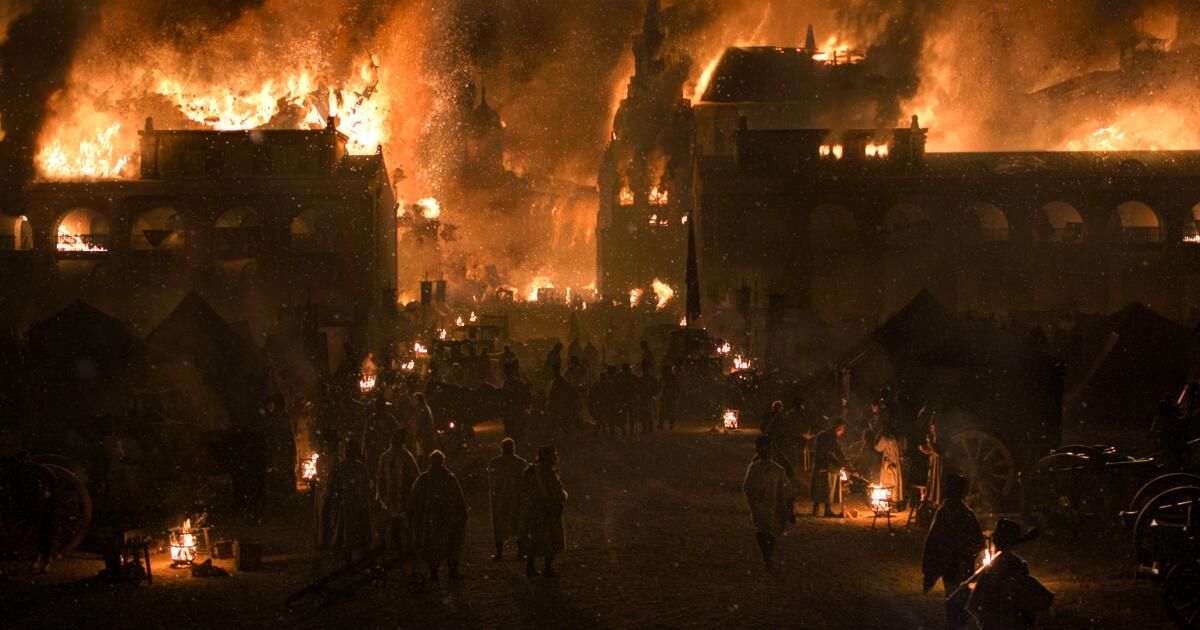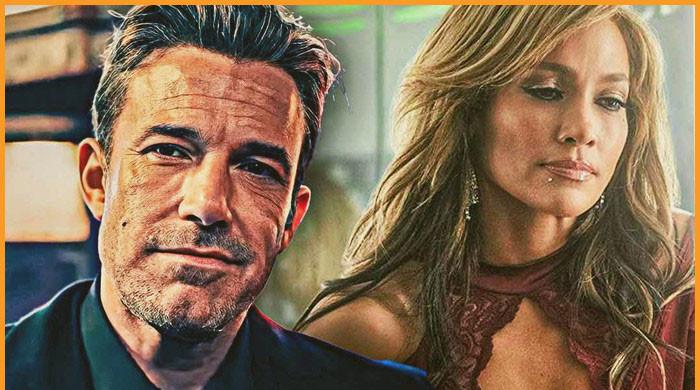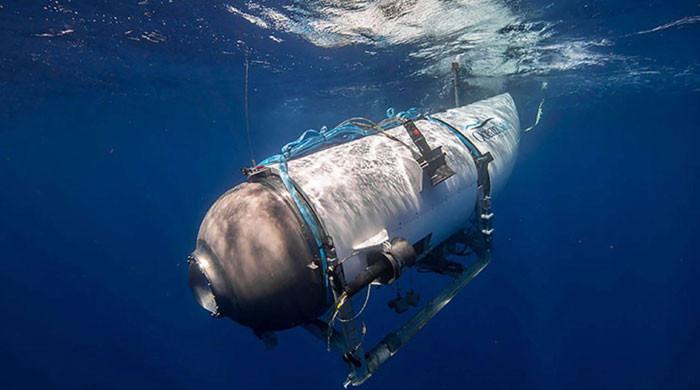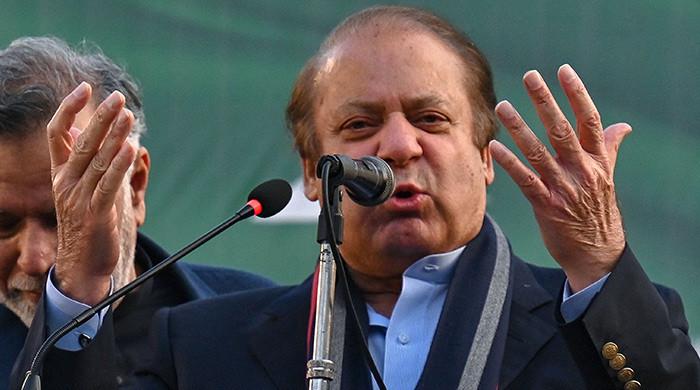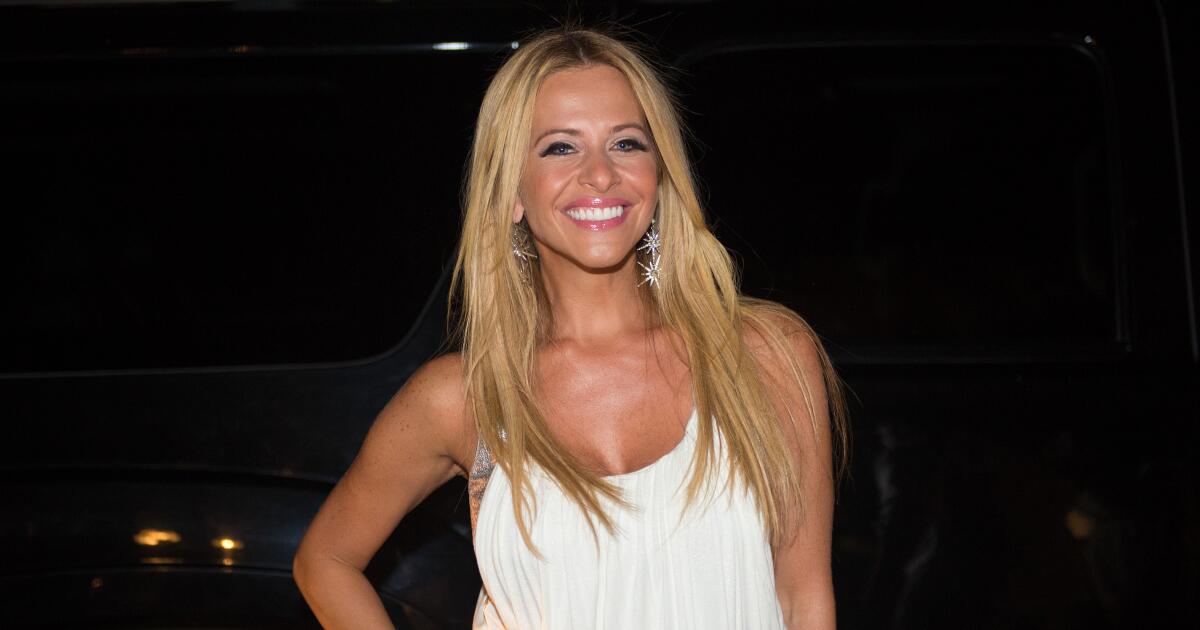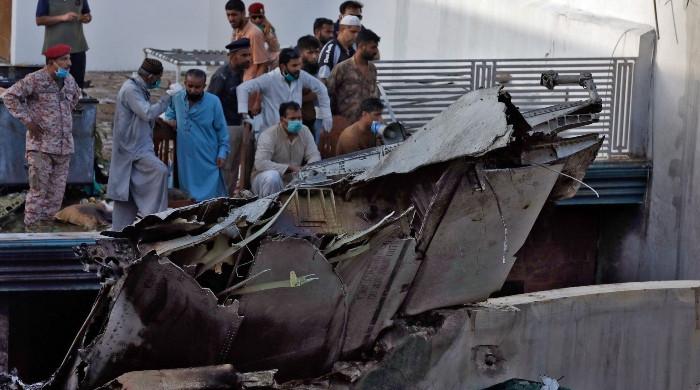Even by Hollywood's formidable location-swapping standards, Ridley Scott's “Napoleon” deserves some kind of medal for its cinematic sleight of hand. The French conqueror never invaded Britain, while the creators of “Napoleon” largely never left Britain. Scott's longtime production designer, Arthur Max, oversaw the effort to reimagine French castles, the Paris riots, the massacre in the Czech Republic (formerly Moravia), Russian conquests and Dutch battlefields, all on the territory of the United Kingdom.
Teaming with set decorator Elli Griff, Max took his visual cues from Scott's meticulous “Ridleygram” storyboards and frequent “War Room” meetings. “We had large physical models in the room, photographs of landscapes, miniature people, enlarged storyboards, fabric samples, costumes, weapons and artillery,” says Max, a three-time Oscar nominee who worked as an architect before turning to photography. production. design. “There is no limit to the amount of detail we can address.”
Speaking from Malta, where he will reunite with Scott in his “Gladiator” sequel, Max explains how he helped move the Napoleonic Wars from continental Europe to (mostly) British soil.
Production designer Arthur Max used a replica of an 18th-century French frigate (redressed and photographed several times) to create the appearance of several “tall ships” firing cannons.
( Apple)
Napoleon's first great victory at Toulon
In 1793, Napoleon successfully attacks the French port fortress that had been blockaded for months by the British navy. “We looked at Malta, where we had done 'Gladiator' in Fort Ricasoli, at the mouth of the Grand Harbor in Valletta,” says Max. “There's a sequence of island peninsulas surrounding the harbor with forts on all of them, and we thought that was a good choice when it came to the nautical side of the film.” To populate the coastal waters of Toulon with “large ships” that fired cannons, Max used the Étoile du Roy. “It's an exact replica of an 18th-century French frigate and one of the few things that are really French in the film,” he says. “It was photographed from different angles, in different climates, repainted in different color combinations, re-equipped, draped with different flags. “This is how our one ship became many ships, both French and English, and also contributes to the sophistication of modern visual effects.”
The royalist insurrection
In 1795, Napoleon orders his troops to shoot at royalist civilians who were rebelling against the post-monarchical regime of the “Direction.” The sequence was filmed at an undisclosed location in the London area. “That whole avenue in Paris where the crowd was charging towards the cannons was [originally] a field of grass,” says Max. “Our landscaping department took very elaborate measures with membranes, rubber mats and artificial stone pavers. It was pretty bloody [historical] In fact, because shrapnel was used, which is like a very large shotgun. He just gutted the crowd.”
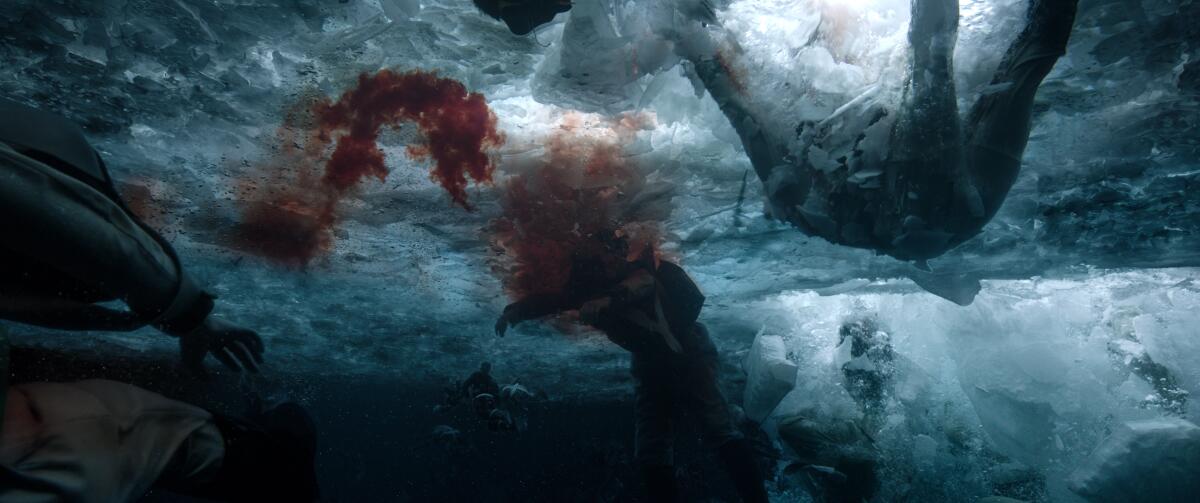
The frozen lake scene was filmed at an airfield near London. “We dug a huge tank in the middle of this airfield for the army to fall through the ice,” says Arthur Max. “We used a hydraulic mechanical collapse ice field augmented with a physical water tank filmed by underwater cameras,” he says.
(ILM/Apple)
Austerlitz and the frozen lake debacle
Napoleon outsmarts the Austrian army in 1805 by luring combatants to a frozen, snow-covered lake. The cannonballs break the ice and cause the soldiers to drown in freezing water. Scott's initial concept was inspired by the mountain lakes of Austria, but, says Max, “we ended up in a small valley outside London that we had also used in 'Gladiator.' “Napoleon’s tent was pitched in the pine forest on the same hill where we photographed Marcus Aurelius’ camp.” The frozen lake portion of the sequence was filmed separately at an airfield near London. “We excavated a huge tank in the middle of this airfield to locate the place where the army fell through the ice,” Max explains. “We used a hydraulic mechanical collapse ice field augmented with a physical water tank filmed by underwater cameras. It wasn't two miles across the lake or anything, it was about 200 metres, but with photography and smart lenses you create the illusion of the kind of scale you need, combined with visuals and extensions.”
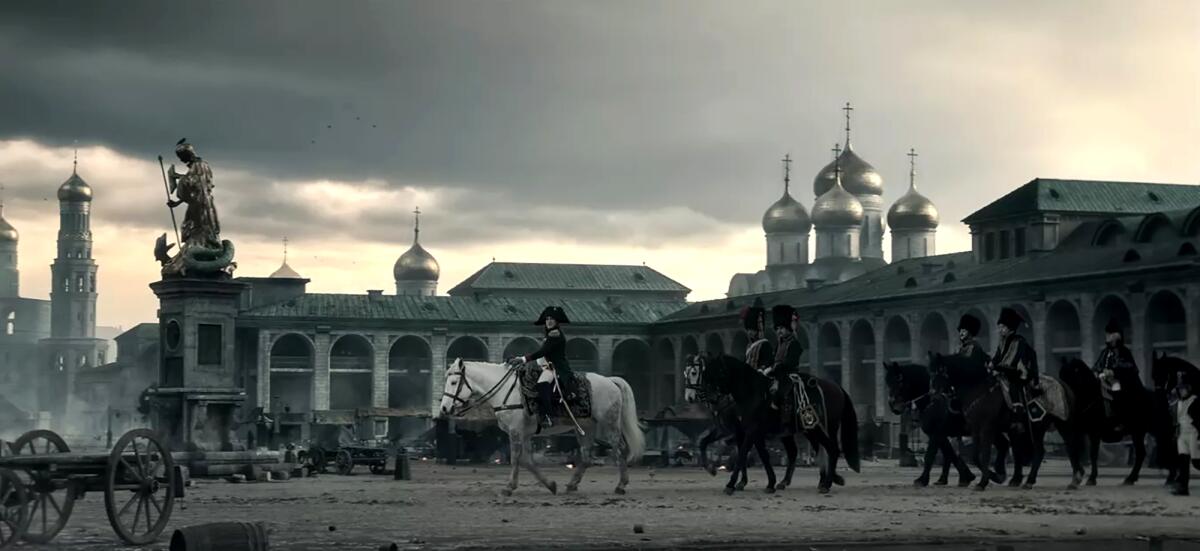
The filmmakers' depiction of Napoleon's disastrous invasion of Russia in 1812 includes a deserted Moscow, filmed at Blenheim Palace in Oxfordshire, England.
(Apple)
The brutal Russian winter
The filmmakers' depiction of Napoleon's disastrous invasion of Russia in 1812 includes a deserted Moscow, filmed at Blenheim Palace in Oxfordshire, and war-torn, purpose-built villages in rural England. “Everything is done in horrible conditions of wind and rain, and everything has to be exquisitely beautiful and then everyone stomps on it and sets it on fire, which was a little out of control because of the high winds and the real wooden sets.” built with infinite possibilities”. Be careful,” says Max. “This is all part of the Ridley Scott universe and there is nothing like it these days. “It’s good old-fashioned cinema combined with 21st century technology.”
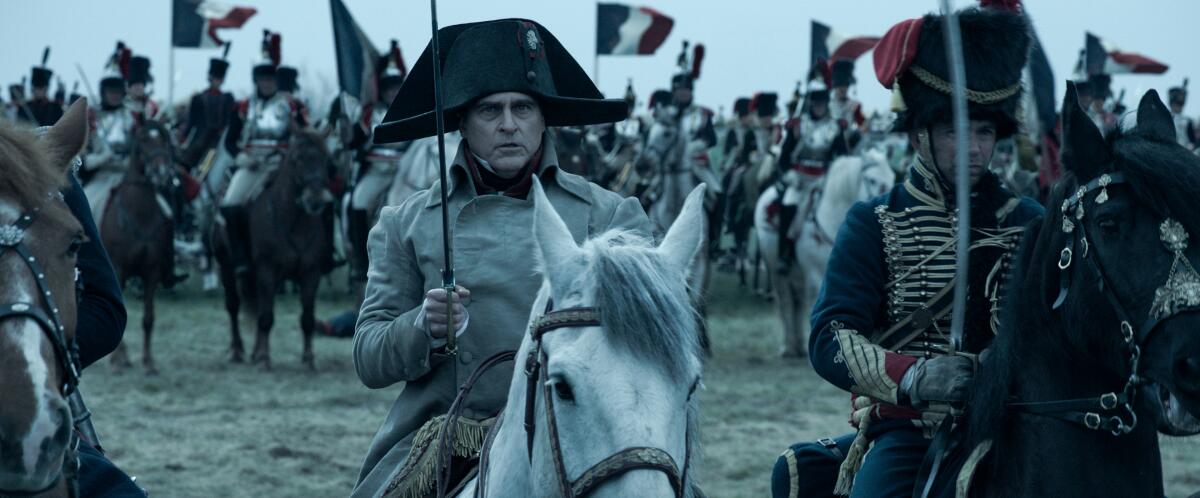
Napoleon's charge into battle took place on an English horse farm.
(Apple)
Waterloo on a horse farm
“Napoleon” culminates with the Battle of Waterloo in 1815, when thousands of English soldiers defeated Napoleon's equally massive army. Max studied Rod Steiger's 1970 film “Waterloo” and then set out to find land in England that could replace Belgium's legendary, bloody extermination camp. Max and his team eventually found a horse breeding farm whose owner turned out to be a Ridley Scott fan. “He was happy for us to dig up his field and take down the fences,” Max remembers. “It is a beautiful valley with beautiful rolling hills high above the plains, and there was enough distance between the two hills for the infantry and cavalry to meet each other without being too far or too close.”
The perfect “Waterloo” site materialized only after numerous failures, but Max says he savors the thrill of the hunt. “Part of the joy of my job is walking through muddy fields in the rain, day after day, with producers on the back of my neck, telling me why it's not a good idea to use this particular field, or the cinematographer saying no. It is a good idea. working for him, or the store manager telling me, 'You know, this is owned by six different owners,' so that's a problem. It follows it and it continues. But I like being outdoors and building places rather than being confined to a lot without enough scope or green screen to give it the scale you need.”

